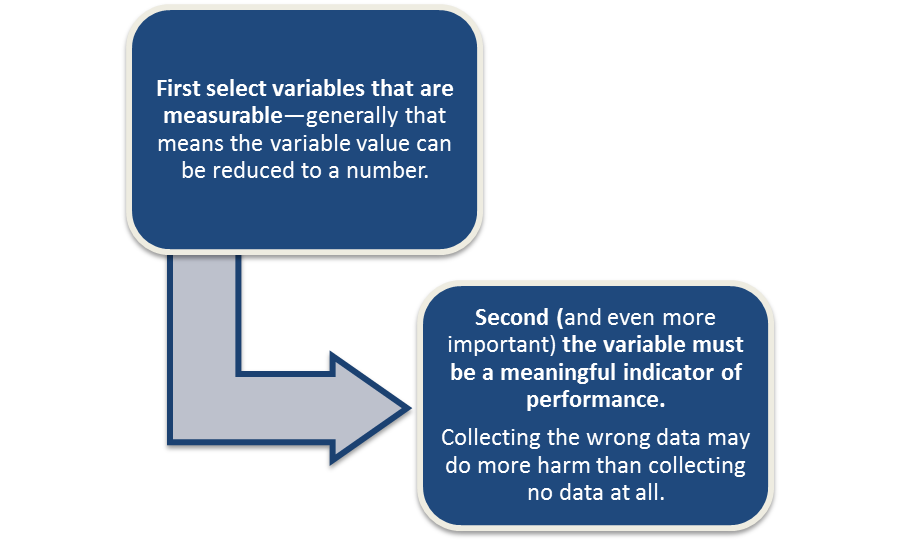In order to make informed decisions and assess the impact of your actions, you must collect meaningful data. You collect benchmarking information in the beginning, and then you collect the same metrics later as the process is being executed. This comparison allows you to measure if you are making a difference and if that difference is in the right direction. Whether your organization produces a product or provides a service, there are processes throughout that can be measured and improved. You can collect data about many variables, so it is critical that you collect data that is meaningful to the decisions you make.
Advanced: In very large manufacturing operations, a process called Six Sigma is often used as the core, data-collection process for continual improvement. Six Sigma has relatively simple, but data–intensive, measures, such as defects per million. Six Sigma uses benchmarking and data collection applied directly to processes. Don’t forget, the processes you seek to measure and improve should include validation from external sources, like customer satisfaction or market share. Six Sigma measures may be difficult to apply to complex systems, low-product volumes, or service businesses. Below are some examples of data you can collect. The list is not all inclusive, of course, but it should provoke your thinking.
You collect data to understand how your organization is doing compared to its goals and objectives. There are many reasons you might decide to keep the data to yourself, such as the power information gives you, your concern about the response to unfavorable data, your disinclination to act on the data—none of these reasons are good for your organization. Get over it! Hoarding data will result in losing credibility and trust. Continual improvement requires sharing knowledge based on comprehensive and timely data.

